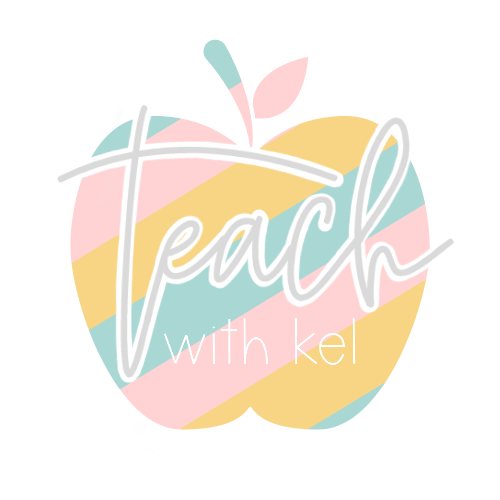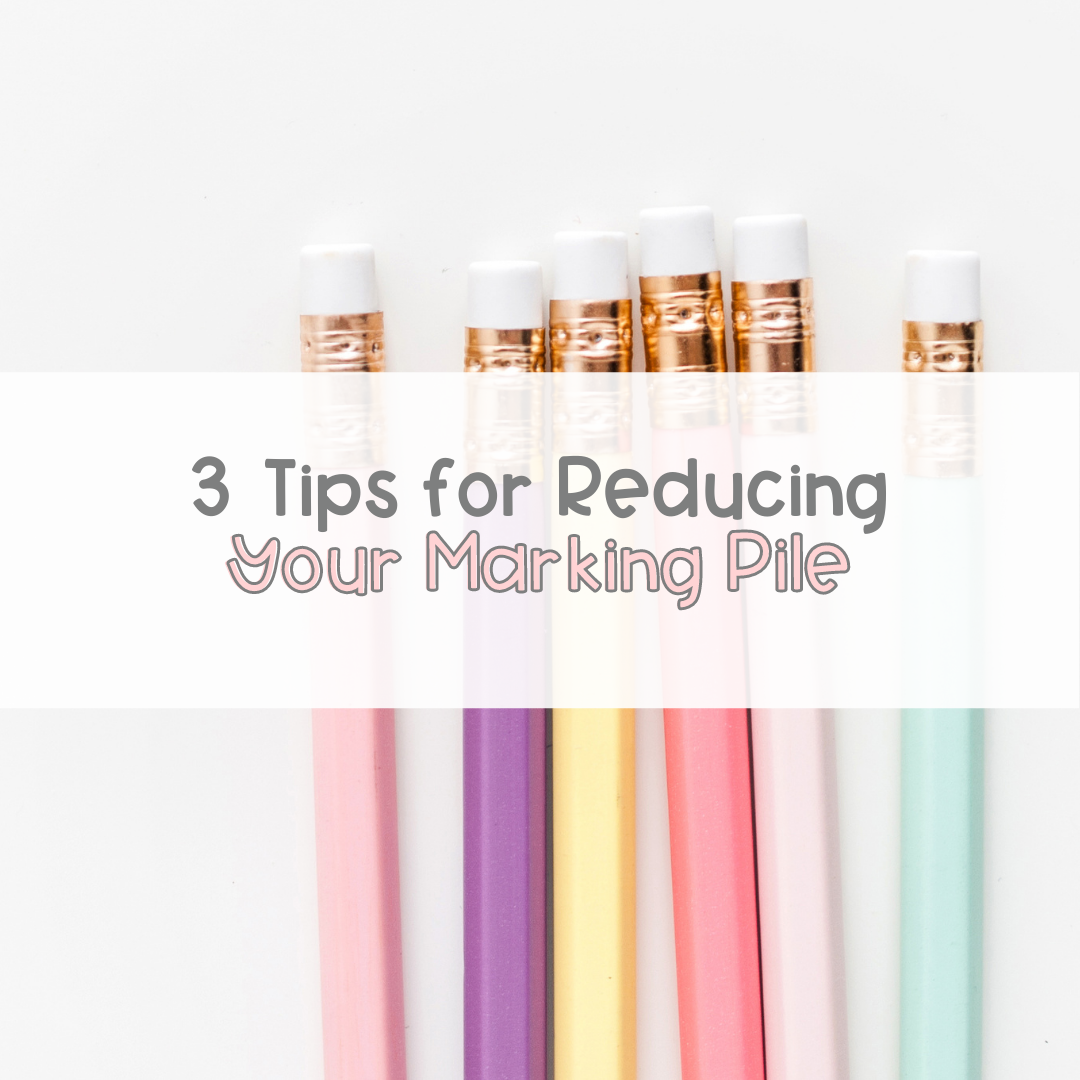If you’re a new teacher, you likely try to mark everything you collect and you likely hand out A LOT. It’s okay if you give your students plenty of practice tasks and opportunities to show their learn. What’s not okay is expecting yourself to assess it all. Here’s the good news, if you already give your students plenty of practice tasks then they likely submit a quality product at the end of the unit. If that’s true, then you absolutely need these 3 tips for reducing your marking pile.
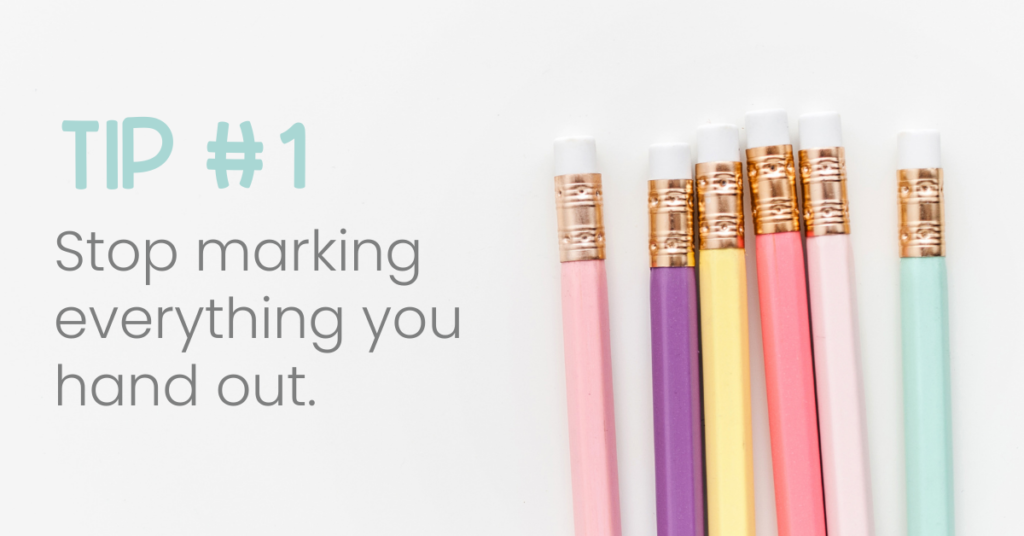
Stop marking everything you hand out.
We only need to mark about 50-60% of what we assign to truly assess our students. Give your students plenty of opportunity to practice the skills you will be assessing in their final product. Use these practice tasks as opportunity to offer suggestions and provide feedback for improvements. Students often appreciate the chance to improve their work before submitting the final draft – “Miss, will you proofread my essay before I hand it in?” Sound familiar? You will be able to reduce your marking load by offering in-the-moment feedback and students will submit higher quality culminating tasks! Big bonus!
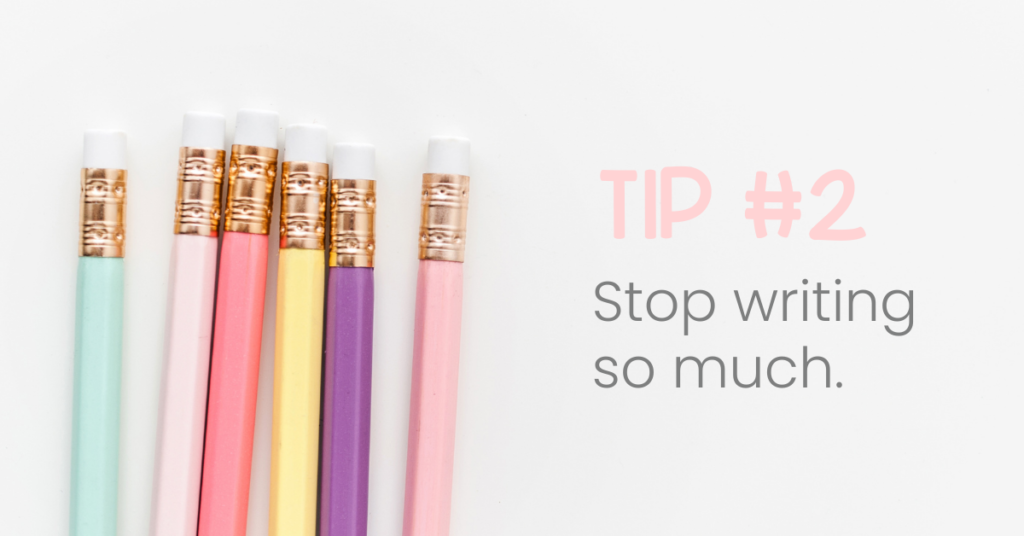
Stop writing so much.
It’s important for us to provide quality, detailed feedback but even I am guilty of writing WAY too much. When I’m marking a longer assignment like an essay, I do a “close reading” of a section of the essay while marking for content and structure throughout the remainder of the document. For example, I will mark the introduction and first body paragraphs closely for spelling, punctuation, grammar, quote integration, citing, etc. I will highlight the errors for the student and make suggestions. For the remaining three paragraphs, I will only leave notes for content and structure.
Students tend to make the same mistake throughout their work over and over. There is no use in highlighting every misused comma and capital letter. All this writing is time consuming for us, and overwhelming for the student when they get an essay back covered in pen. Providing a close reading of just the first section or two allows the student to become aware of the common errors while also being able to absorb the rest of our suggestions.
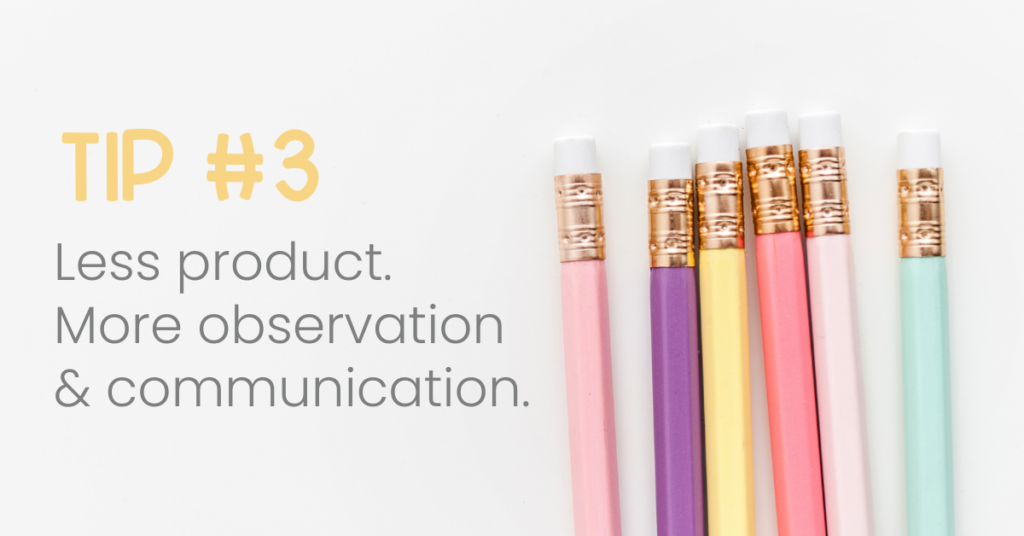
Less is more. Assign less products.
As mentioned in tip #1, your students should be completing a number of practice tasks before submitting their final product. But sometimes our practice tasks even sneak into our marking pile. This is often because we’re assigning too many worksheets and writing prompts for them to complete. Reduce the amount of paperwork by having your students complete tasks that allow for observation and communication opportunities. For example, get them to engage in discussion with partners, gather questions about the unit to ask others, complete brainstorming activities, or a mini-debate. Personally, Kahoots are my favourite form of assessing student knowledge and understanding in a fun way they enjoy. Assigning less products and more observation and communication pieces will help build rapport in your classroom and reduce the marking load.
